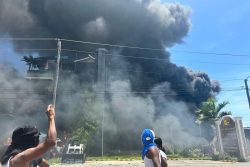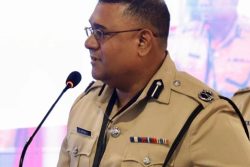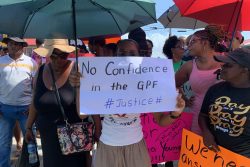Art Williams has been my aviator hero since my public school days at Smith Church Congre-gational during World War II, when I first learnt of the Rupu-nuni cattle trail and attempts to burst open our glorious interior. My dad was away from home six days a week working with the US Seabees building the Atkinson Air Base, and thus I accumulated my own heroes to emulate. Besides Art there was Biggles, fiction hero from the Public Free Library; Black Hawk in the comic books; Robert Christiani at Bourda; Ted Nurse in goal at GFC; Laddie Lewis, cycle champion at BGCC; and champion jockey, Sunich, at D’Urban Park.
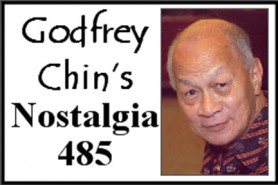 Promising some day to learn more of the aviation feats of Art Williams, my wish was fulfilled last Christmas 2009, when I received the gift of a book from Retired Major General Joseph Singh The Matakuri Trail: The Story of the British Guiana-Brazil Boundary Commis-sion 1929-1939 from the manuscript by C Arthur Hudson. This Nostalgia Buff thus seeks to record for posterity some brief snippets about aviation in Guyana.
Promising some day to learn more of the aviation feats of Art Williams, my wish was fulfilled last Christmas 2009, when I received the gift of a book from Retired Major General Joseph Singh The Matakuri Trail: The Story of the British Guiana-Brazil Boundary Commis-sion 1929-1939 from the manuscript by C Arthur Hudson. This Nostalgia Buff thus seeks to record for posterity some brief snippets about aviation in Guyana.
The first recorded flight in Guiana was in 1913 when George Schmidt, a German assembled and flew his plane from Canon Race Course, which is today the west section of Bel Air Park, east of the present service stations on Vlissengen Road. During the war I hunted ground doves on this open pasture and ate antidesmond till it ‘gainst me and belly bound.’ This was long before Demtoco, the laundry and Argosy, and later Graphic newspaper presses were built there. The coconut oil mill off Lama Ave was destroyed by fire in Bel Air in the sixties.
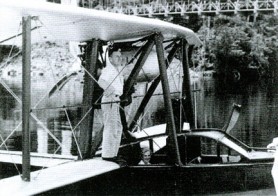
In 1929, Charles Lindbergh whose ‘Spirit of St Louis’ flight was the first transatlantic solo crossing – Newfoundland to Paris – flew the inaugural flight of Panam Clipper 1929, and landed at the mouth of the Demerara River. The first airmail service out of British Guiana commenced when that flight departed. In the late forties my Saturday morning gallivant delight was to linger at the Stabroek Market stelling, hoping to glimpse Art Williams land and glide to his hangar south of the ferry stelling, adjacent to the Demerara Rowing Club. The MV Queriman was the ferry boat then, and was later replaced by the MS Makouria.
The first flight to our interior was to the inland airstrip at Kamasuka in 1931. Earlier the Real Daylight Balata Estates Ltd on the Rupununi River acquired the Fairey 111D seaplane for the conveyance of fever patients from plantations and mining camps to Georgetown. It was flown by Capt Trance, a debonair Indiana Jones type. The story goes that after the first seaplane landed on one of the interior rivers the Amerindians came out of the bush and although they had never seen an airplane climbed aboard and some stayed aboard for a trip. The pilot said that they were perfectly able from the air to point out and name rivers and settlements. What a fantastic sense of navigation.
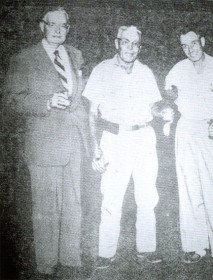
Art Williams came to Guiana in 1933 in the most fortuitous circumstances – a blessing to our virgin hinterland. Born in Amberdale, Wisconsin, USA he started as a civilian flying instructor, barnstormed and gave breathtaking aerial stunt displays, and later operated a charter service flying visitors and fishermen to Bermuda and the Bahamas.
Accepting a charter from a stranger to fly him to Venezuela, which turned out to be a bootlegger whom the police were after, Art decided to stay in Guyana to avoid any awkward questions by the US police on his return. He fortunately was alerted while refuelling on the Demerara River for his return trip.
His plane was a small single boat-type Ireland Wasp, with which he hoped to earn a contract to carry mail for the local government. Building a hangar and ramp on the Demerara River just south of Stabroek Market, he flew excursions for visitors to Kaieteur Falls, with occasional charter runs to the Mazaruni mining districts. Providing invaluable services to the Boundary Commission from 1934 to 1939, he also flew hundreds of mercy missions, carried essential supplies and executed wartime reconnaissance with courage, ingenuity and resourcefulness. He did his own maintenance work on his planes and engines, and narrowly survived several close calls over land and thick bush where no forced landing could be made with safety without notching up a single fatal accident.
In 1942 he was appointed Major in the US armed forces.
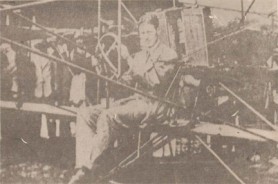
Art participated in several search and rescue missions to find missing American flyer Redfern, who was lost over the Amazon forests on a solo flight to Rio de Janiero. Redfern was last heard of flying low round a tramp steamer off the coast of the Guianas, and dropped a message asking for his whereabouts to be signalled. On a lone reconnaissance flight in January 1936, Art passed over a small Indian village not far beyond the Brazilian border, and while the Indians fled into the bush, he noticed one man standing in the open and waving frantically to the plane. Vague rumours had been circulated of a white man who had come from the skies and was living with the Indians in Brazil. The behaviour of the man intrigued him Brazil. The behaviour of the man intrigued him so much that he circled, dropped a pocket compass and a rough sketch map of the location of his survey base camp, in case it was indeed Redfern.
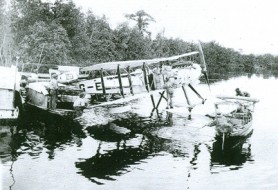
Art and Harry Wendt later set out with a small party in a boat to find this village. A few days travelling up the Sipaliwini and over a large savannah, they met a party of armed Indian warriors with war paint, who did not appear very friendly. Following some palaver conducted with sign language, gifts, and a demo of what a modern rifle could do to a deer at several hundred yards they were able to persuade the young chief to take them to the place where the large thunderbird had fallen. That night the elder chief of the village had a big meeting, reneged on the offer and with rations low and no bargaining tools they were forced to retreat as the tribe became hostile. The eighty-mile retreat to their boats was a narrow escape, surviving on short rations and water from stagnant pools, and traversing sword grass which cut their legs, clothes and footwear into ribbons.
Redfern was never found, and on the eyewitness testimony of Brazi-lian officers subsequently attesting to his gravesite, his widow remarried.
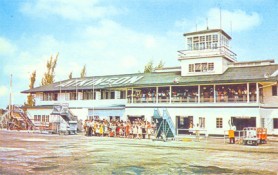
In April 1962 Art flew the Wasp to Bahnia Point, Orinoco River, to rescue the survivors of a US army plane, that had lost course and crashed off the Venezuela coast. The survivors were plucked from the wreckage as a grass fire raged dangerously close to the landing site, The story goes that when the medals for bravery were received at the Georgetown Post Office an ambitious, dedicated, enterprising customs officer charged 21 cents duty. Art’s friend would tease that he paid “a copper sovereign for giving yeoman service.”
Man if we had today such diligent officers we could abolish the current dam VAT!
During the war Amelia Earhart who was missing on a flight in the Pacific was my additional aviation hero. Of course on the Silver screen it was John Wayne in Flying Tigers and Dennis Morgan in God is my Co-Pilot, the story of an American war hero.
In 1952 Art received the US Army Air Medal from President Truman, which was presented by General Howard Craig, Inspector General of the US Air Force who flew in to Atkinson for the presentation. The Brazilian government in appreciation of his services has named a street in Boa Vista after him as well as a mountain in their hinterland.
Art Williams discovered numerous hitherto unknown waterfalls and rivers from the air including King Edward VII Falls
After the war, my aviation hero was Howard Hughes and his Spruce Goose – the failed largest troop carrier ever.
In 1955 Art and his air partner Harry Wendt sold their BG Airways Service to the Guiana government for £823,000. Art remigrated with his wife, and Harry Wendt remained to consolidate the BG Airways headquartered at Main and Hope Streets, the site of the current New Thriving Restaurant.
In May 1959 the Atkinson Airport was destroyed by fire and the old US terminal had to be temporarily resuscitated. In 1963 Guyana Airways was incorporated and became our national airline.
1969 with the Rupununi Uprising, my new aviation heroes were Roland DaSilva, Anthony Mekdeci, Malcolm Chan-a-Sue and Philip Jardim, but that story is for another upcoming Nostalgia.
For more Nostalgias refer to Godfrey’s Nostalgias: Golden Memories of Guyana 1940 to 1980 available at Austin’s Book Store and Shell gas station, Vlissengen Road.




